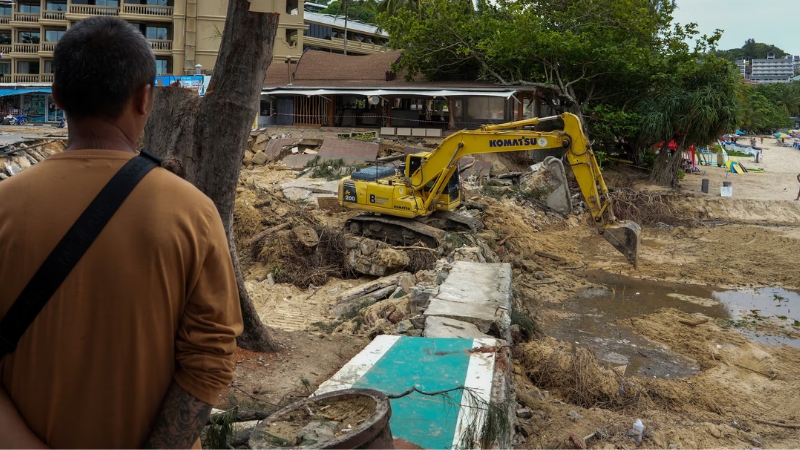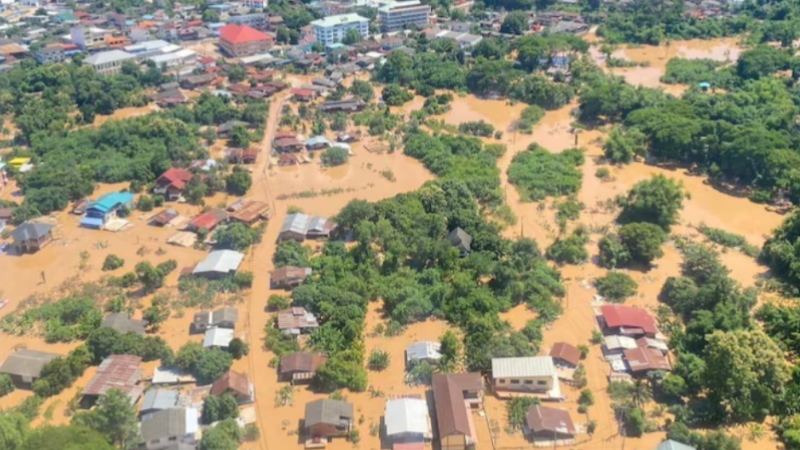Heavy monsoon rains have caused flash floods and mudslides in Thailand, which has led to widespread damage. 22 people have died, and 19 others have been injured. Local officials are warning of more danger in several provinces, and 30,000 homes have already been affected.
Whether or not your travel plans are directly affected, it is important to take note of some safety precautions such as the dos and don’ts when there is a flood so you can navigate your holiday safely and get the most out of your trip.
Also read: Thailand Confirms New Mpox Strain: Tips to Stay Safe While Traveling
Fatal mudslide on Phuket Island

Image credit: Reuters | Official Website
Among the 22 fatalities, 13 occurred in a tragic mudslide on the southern island of Phuket. The victims included a Russian couple and nine migrant workers from Myanmar. The mudslide followed a week of relentless rainfall that affected a dozen provinces, causing significant damage and loss of life.
Government response and relief efforts
Over the weekend, Prime Minister Paetongtarn Shinawatra visited flood-affected areas in the northern province of Nan to distribute food supplies to residents. The government is actively engaged in relief efforts, offering assistance to those affected by the floods and mudslides.
High flood risks in Northern and Central Thailand

Image credit: Reuters | Official Website
Flooding is still bad in five northern provinces, including Chiang Rai, Sukhothai, and Prae. Videos taken by drones in Chiang Saen District in Chiang Rai show houses underwater, which highlights the severity of the flooding. Officials are also watching areas near the Chao Phraya River, including Bangkok, because the water levels might go up. Even though Bangkok is relatively safe right now, people should still be careful and ready for possible flooding.
What to do when there is a flood
When the flooding begins: It is important to sign up for emergency alerts and prepare an emergency “go bag” for you to store important documents such as your passport and spare cash safely in the event that calls for potential evacuations.
After the flood: It is also important to stay informed through news alerts to prep for your next move. Move to higher ground if flooding occurs, and be prepared to evacuate if instructed. Avoid driving through or walking in floodwaters due to obscure objects that can cause harm. On
Avoid the flooded area: In case you forgot some essential items in the affected area, avoid returning to the flooded area as floodwaters can be hazardous, containing sewage, chemicals, and debris. Also, houses in Thailand still heavily rely on power line networks for electricity that may be exposed due to flooding. Hence, it’s crucial to seek the advice of the local health authorities and take protective measures when returning to flooded areas.
Also read: Thailand Introduces New Medical Coverage Scheme for Tourists
With more rain expected, Thai authorities are on high alert, preparing for additional flooding and mudslides. Communities in high-risk areas are advised to take precautions and stay informed about weather updates to ensure their safety. While travel disruption is not expected in tourist hotspots like Bangkok and other parts of Thailand, travellers should take extra precautions nonetheless.





